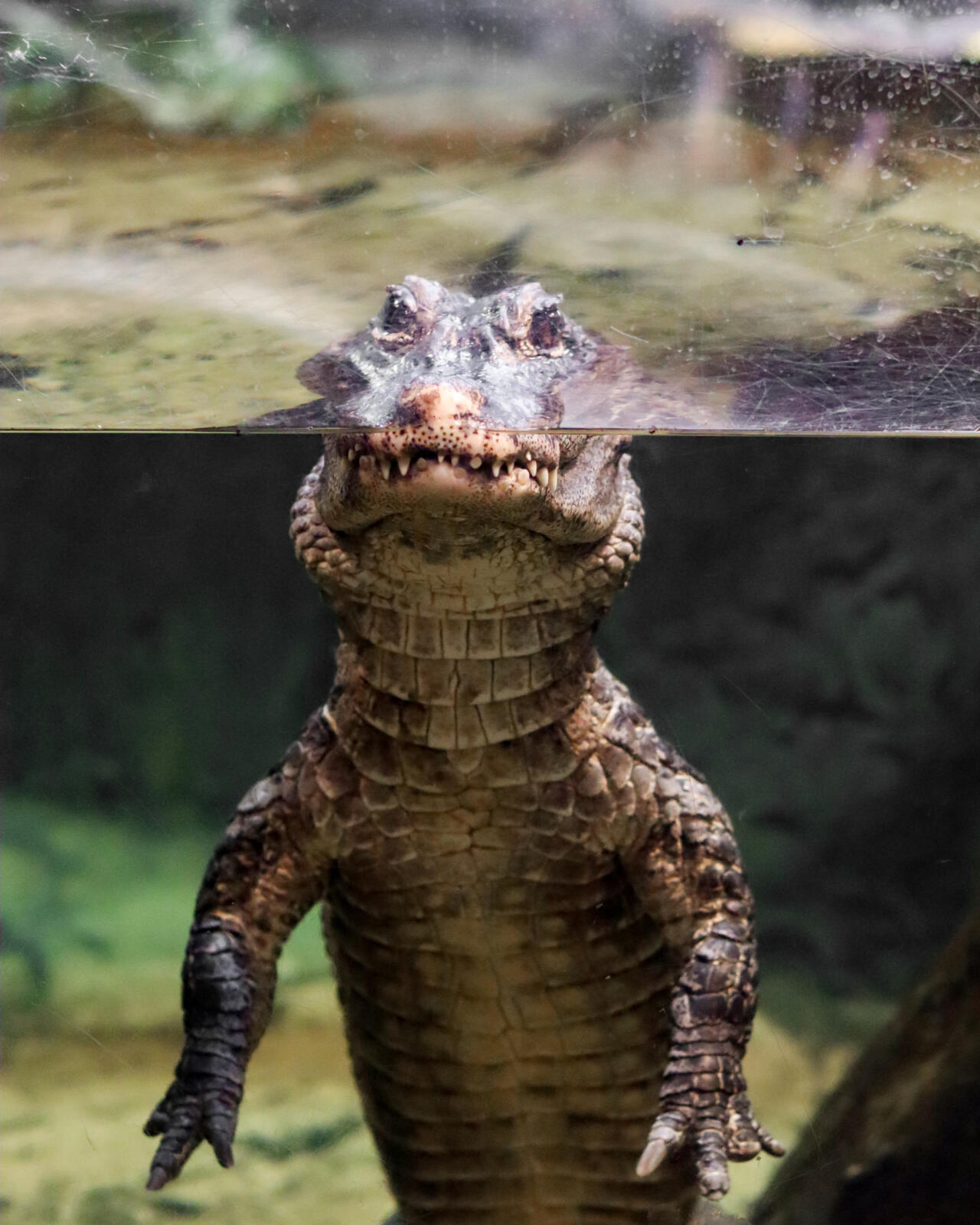Chinese Alligator
Did you know...
there are only two alligator species -- the American alligator and the smaller Chinese alligator.


Chinese alligators usually grow to about 4 feet, about half the size of American alligators, and weigh less than 50 pounds. They differ from its American counterpart in subtle ways. The head is more robust and its snout is slightly upturned. The eyelids of the Chinese alligator have a bony plate that is missing in the American alligator. The American alligator also lacks the bony belly plates, or osteoderms, of the Chinese alligator.
Chinese alligators are dormant from late fall into early spring, when temperatures are cold. They create burrows on the banks of wetlands that are approximately 3 feet deep, a foot in diameter and almost 5 feet long. These burrows are very elaborate, and may house more than one alligator. Once they emerge from their burrows in April, they spend time basking in the sun to raise their body temperature, as they are ectotherms and cannot create their own heat. Once their body temperature has normalized, they return to their normal nocturnal ways. They are aquatic animals, and can also use the water to thermoregulate by staying in the upper water level heated by the sun, or moving to shaded waters to cool off.

__________________________________________________________________________________________________________________________________________________
Where can I see the Chinese alligators at the Zoo?

Look for our Chinese alligator in its outside exhibit between the Warner Park Ranch Petting Zoo and the big red barn.
_____________________________________________________
How Chinese alligators are being helped in the wild
Adults are threatened only by humans but this threat is significant. People have displaced Chinese alligators from most of their historic range. Encounters between people and alligators usually end badly for the alligators. Despite their protected status, local farmers have been known to kill them out of fear or frustration. Chinese alligators will prey on domestic ducks given the chance, and sometimes dig burrows into the banks of irrigation channels, causing them to collapse. Both habits upset farmers.
However, the main threat facing the Chinese alligator is habitat loss. The species’ traditional wetland habitat has been largely converted to rice paddies, and the remaining wild populations are confined to drainage ditches and farm ponds in one small Chinese province. The wild population may be fewer than 150 individuals. Fortunately, efforts are underway to help the Chinese alligator. The species has been successfully bred in wildlife refuges and in zoos, which maintain healthy populations. In 2003, the first captive-born Chinese alligators were released into their native range.
How you can help Chinese alligators
- Learn more about or donate to organizations like Anhui National Nature Reserve and the Chinese Alligator National Nature Reserve, which work with local communities to protect Chinese alligator habitat and ban the hunting and poaching of them.
- Chattanooga Zoo participates in the Association of Zoos and Aquariums' Species Survival Plan (SSP) for Chinese alligators. About 100 Chinese alligators are managed under this SSP program. The Chattanooga Zoo is a proud participant in an effort to increase their numbers.
- Chattanooga Zoo supports many organizations that directly help animals in their natural habitats. By supporting Chattanooga Zoo, you are our partner in saving and protecting wildlife worldwide.








